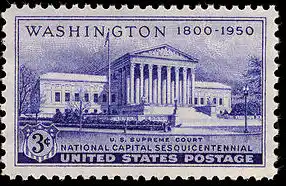
The District of Columbia, often referred to simply as Washington, D.C., is more than just the political epicenter of the United States. Its history tells a story of strategic planning and compromise, shaped by national debates over governance, civil rights, and the balance of federal and local power. Founded as a neutral seat of government in 1790, Washington, D.C. has evolved into a vibrant metropolis with a unique legal and political status. Over time, the city has been shaped by events both historic and modern—from the burning of its public buildings during the War of 1812, to the expansions and contractions of its boundaries, to its ongoing quest for greater autonomy and representation.
Research your ancestors on MyHeritage
1608: Early Exploration1608: Early Exploration
- Captain John Smith of the Jamestown colony explores the upper Potomac River region, marking the earliest recorded European contact with the area that would become Washington, D.C.
1632–1640s: Colonial Settlements1632–1640s: Colonial Settlements
1790: The Residence Act1790: The Residence Act
- Congress passes the Residence Act, authorizing the establishment of a federal district along the Potomac River.[1]
- The location is chosen as a compromise between Northern and Southern states, reflecting the political tensions of the era.
1791: Planning the Federal City1791: Planning the Federal City
- President George Washington appoints Pierre (Peter) Charles L’Enfant to design the layout of the new federal city.
- The district is formally named “The Territory of Columbia,” and the city is named “City of Washington” in honor of the first president.
1792–1793: L’Enfant’s Vision1792–1793: L’Enfant’s Vision
- L’Enfant draws grand avenues and significant public spaces, though conflicts over his approach lead to his dismissal.
- Andrew Ellicott, along with Benjamin Banneker (an African American surveyor), refines the final plans.
1800: Relocation of the Federal Government1800: Relocation of the Federal Government
- The U.S. government officially moves from Philadelphia to Washington, D.C.
- John Adams becomes the first U.S. president to take residence in the White House (then referred to as the President’s House).
1814: War of 1812 – Burning of Washington1814: War of 1812 – Burning of Washington
- British forces invade the city during the War of 1812, burning the Capitol Building, the President’s House, and other public structures.
- First Lady Dolley Madison famously saves several national treasures, including a portrait of George Washington.
1846: Retrocession of Alexandria1846: Retrocession of Alexandria
- The part of the District south of the Potomac River, including the city of Alexandria, is returned (“retroceded”) to Virginia.
- The move is partly driven by concerns over economic growth and the potential abolition of slavery.
1862: D.C. Emancipation Act1862: D.C. Emancipation Act
- President Abraham Lincoln signs legislation abolishing slavery in the District of Columbia, making it the first place in the United States to end the practice by federal action.
- This precedes the broader national Emancipation Proclamation by several months.
1871: Establishment of a Territorial Government1871: Establishment of a Territorial Government
- Congress passes an act to unify Georgetown, Washington City, and Washington County under a single territorial government, with an appointed governor and local legislative assembly.
- Financial mismanagement and political issues lead to a shift away from home rule shortly thereafter.
1878: Organic Act of 18781878: Organic Act of 1878
- After a period of fiscal crises, Congress passes the Organic Act, reorganizing the District into the current structure of three commissioners appointed by the federal government.
- This effectively diminishes local control for nearly a century.
20th Century – Early Modern Growth (1900–1940)20th Century – Early Modern Growth (1900–1940)
- Washington, D.C. grows rapidly, spurred by government expansion and infrastructure projects.
- Major public works and the construction of monuments shape the city’s iconic landscape.
1961: 23rd Amendment1961: 23rd Amendment
- Grants residents of the District of Columbia the right to vote in presidential elections.
- The District, however, still lacks voting representation in Congress.
1968: Civil Unrest1968: Civil Unrest
- The assassination of Dr. Martin Luther King Jr. triggers riots in Washington, D.C., highlighting underlying racial and economic tensions.
- Certain neighborhoods suffer significant damage, prompting subsequent urban renewal efforts.
1973: D.C. Home Rule Act1973: D.C. Home Rule Act
- Congress passes legislation granting the District limited home rule, including the establishment of a locally elected mayor and city council for the first time in a century.
- The federal government retains oversight authority.
1993: First Vote on Statehood1993: First Vote on Statehood
- The District votes overwhelmingly in favor of D.C. statehood in a local referendum.
- Efforts in Congress stall, reflecting the ongoing challenge of achieving full representation.
21st Century: Ongoing Political Status Debates21st Century: Ongoing Political Status Debates
- Calls for D.C. statehood intensify, bolstered by a growing population and concerns over disenfranchisement.
- Multiple bills introduced in Congress seek to make “Washington, Douglass Commonwealth” the 51st state, reflecting Frederick Douglass’s historical significance in the District.
- 2016: Statehood Referendum
- D.C. voters again approve a referendum supporting statehood, showcasing continued public support.
- 2021: H.R. 51 Passes the U.S. House of Representatives
- The U.S. House of Representatives votes in favor of a statehood bill, marking the furthest such legislation has advanced.
- The bill stalls in the Senate, underscoring the ongoing tension over the District’s political future.
Present DayPresent Day
- Washington, D.C. stands as a dynamic city with a population of over 700,000 residents.
- The struggle for full Congressional representation and autonomy remains central to local politics and activism.
References
- ↑ The Establishment of Washington, D.C. Civicly

